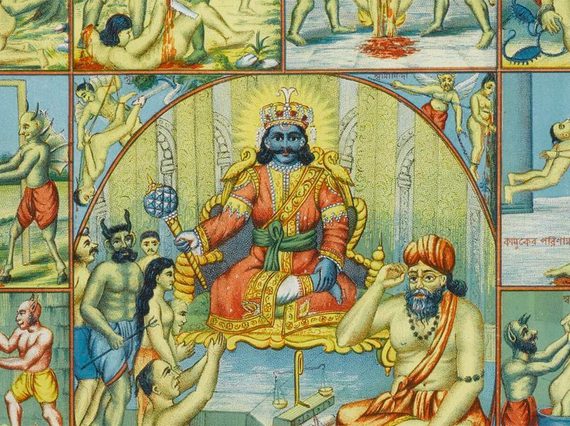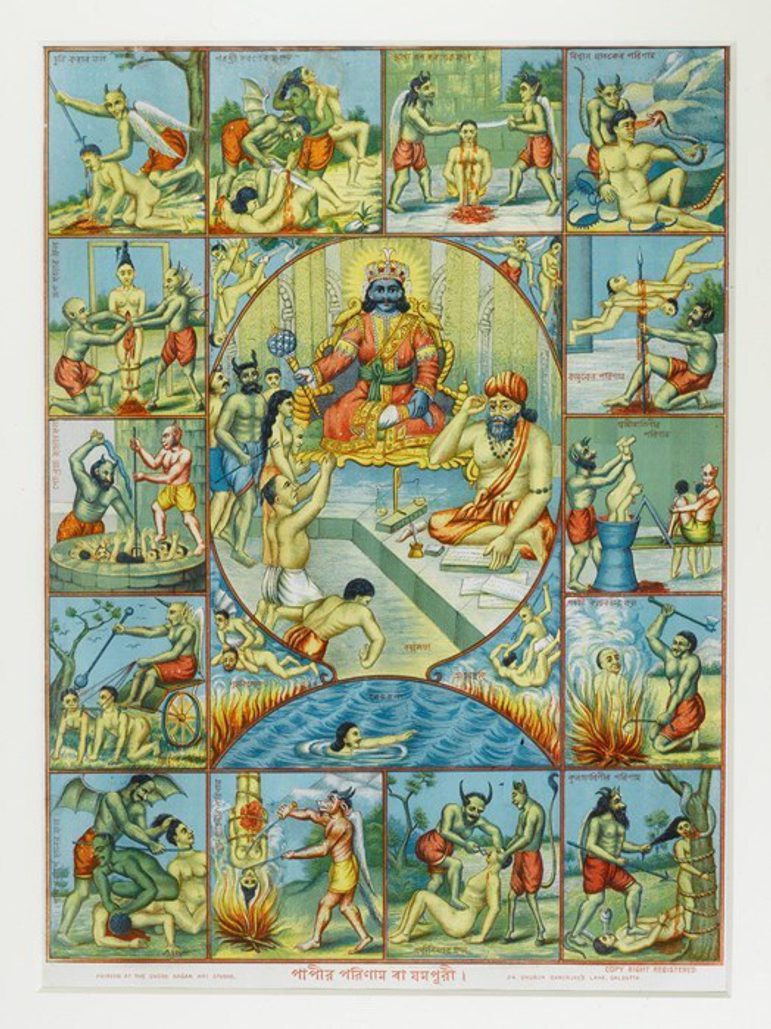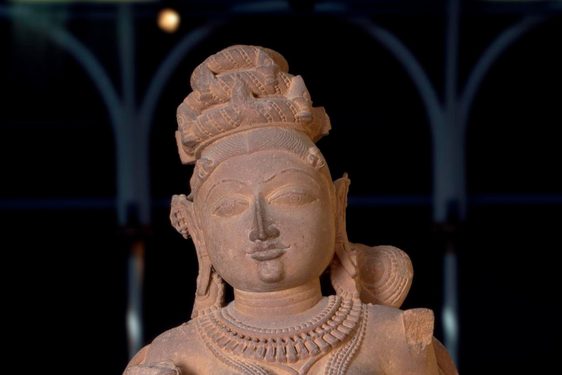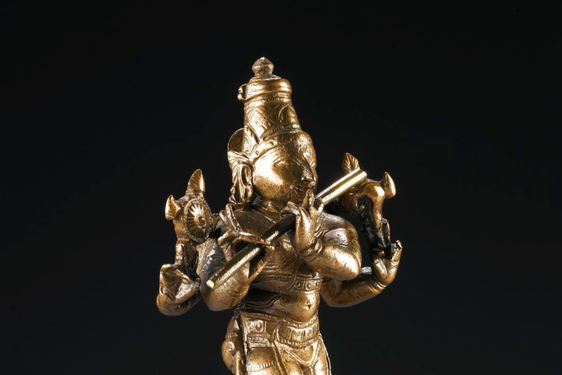
A poster depicting Yama, the Hindu Lord of Death
News Story
Crimes and punishments in Death's Palace
The 19th century poster of Yama, the Hindu Lord of Death, has a caption in Bengali. The caption means ‘The Sinner’s Punishment or 'In Jompuri’. The latter is in Bengali and means Yamapuri, the Death’s Palace.
The poster has 12 panels depicting the dead soul’s predicament in hell and a central panel which shows Yama (Jomraj) sitting in judgement on his throne. Furthermore, there is a Rishi or Saint-like figure with the record of the dead person’s deeds open in front of him, and the new arrivals awaiting the verdict for their sins. The surrounding 12 panels depict how sinners will be punished according to the sin or crime they have committed. Laughter was heard from the group when it was discussed how one of the ‘crimes’ was a wife nagging her husband. Many of us agreed this seemed a bit old fashioned, now.

Poster depicting Yama, the Hindu god of death and scenes of punishment, India, late 19th century. Museum reference K.2000.159.
It is believed that sinners need to go through the apt punishment as retribution for them to be reincarnated according to their deeds. The belief in reincarnation is shared by Hindus, Jains, and Buddhists, which confirms that India is the birthplace of three world religions.
The blue and green background colours of the panels create an underworld atmosphere that is probably designed to drive fear in the beholder. The humans appear naked and in a tallow yellow to imply their guilt. They are sharply contrasted with the vibrant saffron worn by Yama and his followers, which gives him the sanction of religious authority as saffron is the colour worn by holy men and women practising Hinduism, Jainism and Buddhism.
In our estimation, the panels on the Yama poster, with their graphic detail and style, resemble a tradition of art known as kalighater patachitra, which became the inspiration for the Bengal School of Modern Art in the early 20th century. During the so-called Bengal Renaissance, artists like Abanindranath Tagore, Nandalal Bose and Sunayani Devi amongst others moved away from European masters and went back to traditional folk art for their expressive modern paintings which are rooted in regional culture and literature.

The group discussing the meaning and symbolism in the poster.

Closer inspection and discussion of the poster of Yama.
The Yama poster also reminds us of patua or scroll paintings by chitrakars (scroll artists), which tell stories panel by panel and open vertically as the lyricist sings the narrative while unfolding the scroll. This artform is still prevalent and practised by chitrakars in Medinipur district in West Bengal. The panels in the Yama poster tell stories of the lives of people, in this case, of sinners.
The poster prompted a lot of questions from the group to find out more. For example, we wanted to know where in Bengal it was made and by whom. When, where and how it was displayed and for what purpose.
For a European audience, the Yama poster echoes the warning of the seven deadly sins in Christian mythology, the grave message of the Ten Commandments and descriptions of Hell and Purgatory in the Old Testament. So, we believe the poster will resonate with visitors to the National Museum of Scotland at various levels of understanding and association.
The poster of Yama can be found in the Inspired by Nature gallery at the National Museum of Scotland.
Written by
Members of the Networking Key Services group
In 2022 South Asian community groups supported by Networking Key Services (NKS) visited the National Museum of Scotland to view the galleries and interpret objects from the South Asian and Scottish collections.


